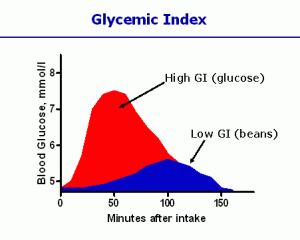The A1C Dynamic: You visit your health care provider and an A1c test is ordered. The doctor may be concerned because of your weight or perhaps a family history of diabetes. There may be other concerns as well. The results of this test may provide the warning shot needed to alter your lifestyle before diabetes is fully diagnosed.
For those who already live with diabetes the A1c test simply provides your medical team with a look at your average blood glucose level over the previous 90 days. This may be important to your doctor since home testing cannot provide this average.
Safe Numbers
A range of 4-7 in an A1c test is generally considered a positive sign. This means that blood glucose is being managed well on an average basis. Complications are experienced much less when A1c numbers stay within this range.
Dangerous Numbers
Any number higher than 7 is cause for concern. The truth is more than 50% of diabetics live with A1c levels above 7. Some of the risks patients face are deteriorating vision, the possibility of lower limb amputation, and failure of the kidneys that often result in dialysis or, in some cases, a kidney transplant.
Getting Technical
A1c is the abbreviated form of glycosylated hemoglobin A1c. When glycosylation of hemoglobin is discovered it is linked to kidney damage and degeneration (nephropathy) or damage to the eyes (retinopathy).
According to the Michigan Diabetes Research & Training Center
“Once a hemoglobin molecule is glycated, it remains that way. A buildup of glycated hemoglobin within the red cell reflects the average level of glucose to which the cell has been exposed during its life cycle. Measuring glycated hemoglobin assesses the effectiveness of therapy by monitoring long-term serum glucose regulation. The HbA1c level is proportional to average blood glucose concentration over the previous four weeks to three months. Some researchers state that the major proportion of its value is related to a rather short term period of two to four weeks.”
It is possible for diabetic patients to see positive control of their blood sugar change during spikes of low glucose levels (hypoglycemia) or high blood sugar (hyperglycemia). When an A1c test is called for your primary care physician can likely tell if you have struggled with either issue during the previous three months. A number lower than 4 may indicate hypoglycemia while numbers above 7 may indicate hyperglycemia. This information is then factored into the treatment options you will have available going forward.
Going On The Defense
You can make positive choices that will aid in improving your next A1c test score. By managing your diet as the first plan of attack you may find positive results.
DiabetesA1C.org provides the following diet tips in managing future A1c test scores.
- Mentally divide your plate into quarters and use it to map your meal.
- 1/4 of your plate should be carbohydrates (carbs), such as rice, whole grains, potatoes, pasta, corn, peas, etc.
- 1/4 of your plate should be lean protein: meat, fish, poultry, tofu, etc.
- 1/2 of your plate should be non-starchy veggies like green leafy vegetables, broccoli, tomatoes, cauliflower, cucumbers, carrots, salads, etc.
Adding exercise to your daily ‘to do’ list can also help provide stability to your scores.


 The Glycemic Index – What is it: Medicinenet.com describes the Glycemic Index as, “An indicator of the ability of different types of foods that contain carbohydrate to raise the blood glucose levels within 2 hours. Foods containing carbohydrates that break down most quickly during digestion have the highest glycemic index.”
The Glycemic Index – What is it: Medicinenet.com describes the Glycemic Index as, “An indicator of the ability of different types of foods that contain carbohydrate to raise the blood glucose levels within 2 hours. Foods containing carbohydrates that break down most quickly during digestion have the highest glycemic index.”